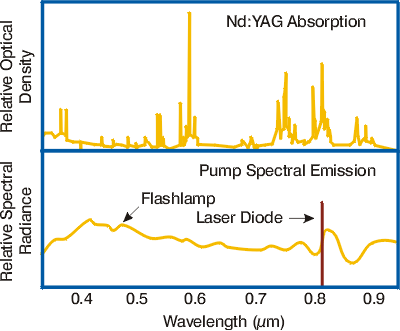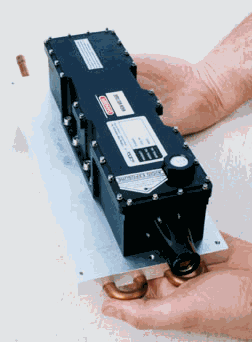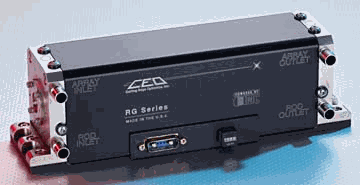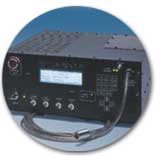

3.5 System Integration: High Power Direct Diode Lasers and Diode-Pumped Solid
State Lasers
There are a lot of contents in system integration of laser machining and
monitoring systems. Diode lasers and Diode-pumped solid state lasers are chosen
to illustrate this topic because this direction is progressing rapidly and
may have great impact on future laser machining systems.
3.5.1 High Power Direct Diode Lasers
The average power from individual laser diode bars have been conting
to increase, 150W per bar has been demonstrated [Hoult, et al., 2000].
In addition, an increasing number of specific wavelengths are available
over a range from 690nm to 980nm. If the application process does not
require a specific wavelength, temperature control of the laser becomes
less demanding, and hence the laser system is less expensive. This helps
reduce the costs for diode laser processing systems. For example, soldering
and plastic welding do not require tight wavelength control.
To achieve high average power, all currently available high average power
systems use diode bar stacks with a range of differential stacking techniques
and configurations. Some reasons for the slow commercial penetration of
high power direct diode lasers are cost, technical complexity and unproven
reliability. Only when diode lasers can demonstrate the combination of
reliability, cost per watt and brightness required for a particular process
would they become widely accepted. High power direct diode lasers has
found satisfactory applications in surface treating and laser forming,
which don't require too high laser intensity and beam quality. For them
to enter the realm of laser machining processes, however, progress in
cost, reliability, working distance, beam geometry, and minimum achievable
spot size must be made. It is expected that the cost of laser diodes will
continue to drop, and many research works are carried out to improve its
performance, one can expect its impact on LMP in the near future [Ozkan,
et al., 2000].
3.5.2 Diode-Pumped Solid State Lasers
The most common solid state lasers used today in industrial applications
are based on the crystal Nd:YAG, pumped by either pulsed or cw gas discharge
lamps. Such technology is becoming more and more complex in order to increase
its quality and brightness. The advances in high-power semiconductor lasers
makes diode pumped solid state lasers more advantageous over lamp pumped lasers.
Let's what advantages a diode-pumped laser can offer.
Benefits of Diode-Pumped Lasers
- Reliability: Flashlamps burn out unpredictably and often. Diode
arrays degrade gracefully over time--a very long time. Many last in
excess of 20,000 hours!
- Greater Efficiency: Diode arrays are far more electrically efficient
than flashlamps. As an example, Nd:YAG diode array light is tuned to 808
nm ±3nm which is where the YAG host material absorbs the greatest percentage
of light, versus a flashlamp which outputs a broad white light source,
~95% of which turns into waste heat(see Figure below).

Figure 17: Comparison of laser diode pumping spectral and
flash lamp pumping.
- Lower Voltage Requirements: Diode-pumped lasers do not require
the same high voltages necessary for an equivalent flash lamp system. The
input power required for a diode-pumped laser is typically 5-10% of the
equivalent flash lamp system eliminating the need for 3Ø power.
- Compact Design: Diode-pumped systems allow for smaller, more compact
housings.

Figure 18: A conductively cooled electro-optically Q-switched
laser (Courtesy of Cutting Edge Optronics, Inc.)
- Beam Quality: Diode-pumped lasers are well known for their superior
beam quality. This is especially true when you end-pump with diodes. When
radially pumped, the M2 at full power is ~20 for most systems,
depending on the cavity design -- as opposed to the usual >40 of most
flashlamp systems.
- Less Waste Heat: With diode-pumped lasers cooling is achieved with
closed loop standard distilled water, or a mixture of water and glycol --
without the need for deionization and external city or tower cooling water.
- Durability: Diode-pumped lasers are far more rugged. Complicated
oscillator/amplifier units can be shipped via common carriers. When they
arrive, the customer simply plugs them in and begin lasing!
- Ease of Conversion: It's a simple process to retrofit a flashlamp
systems to utilize diode arrays. Most flashlamp systems can be easily converted
to a diode-pumped systems.

Figure 19: A 750W diode pumping modual at 1064nm (Courtesy of
Cutting Edge Optronics, Inc.)
The laser module is reliable and efficient pump cavity which can be the "engine"
in new laser system development and production, or can be used to convert your
existing lamp-based designs to state-of-the-art diode-pumping. The head efficiently
pumps a Nd:YAG laser rod by radial arrays of efficiently coupled long lifetime
laser diode bars, and delivers good pump uniformity and stable lensing performance.
The laser module requires ~ 300 VDC diode bias from a reliable solid state driver
and is cooled by recirculating filtered water from a simple chiller system,
and central cooling water is not required.

Figure 20: Picture of a Fiber Array Packaged diode laser system
(Courtesy of Coherent Inc.)
A standalone, turn-key microprocessor-controlled FAP-System™ (FAP = Fiber
Array Packaged) was demonstrated by Coherent Inc. This CE marked, full-feature
system delivers up to 30W of diode light using an armored, 5 meter-long, 800mm
fiber. More than 100W of power may be achieved via fiber combining the outputs
of several systems. The FAP-System allows users total flexibility, with built-in
dynamic temporal pulsing control and quick swap out of different wavelength
diode laser from the red to the infared. This power, pulsing, and wavelength
control enable the system to support a variety of applications including materials
processing (soldering, marking, heating, plastics welding, etc.), medical therapeutics,
solid-state laser media pumping, and polarized nobel gas production through
rubidium and potassium spin exchange.
Rack-mountable and air-cooled, the rugged FAP-System™ is controlled by
a front-panel user interface or computer-controlled RS-232 interface. Diode
laser operating wavelength is controllable with temperature tuning from 5-35
degrees Centigrade in 0.1 degree Centigrade increments.
With the compact design, high beam quality and relatively simple cooling and
power supply requirements, diode pumped solid state lasers can be easily integrated
with robots to realize more flexibility in spatial control.
References
W. C. Schwartz, et al., 1996, "A diode-pumped solid state Nd:YLF laser for
micromachining," ICALEO'1996, PP. E.48-56.
P. Hoult, et al., 2000, "Preliminary processing with a novel high average power
direct diode laser(HPDDL)," ICALEO'2000, pp. A.1-10
A. M. Ozkan, et al., 2000, "Diode lasers-A different route to high average
power," ICALEO'2000, pp. A.50-58
C. M. Cook, et al., 2000, "High power direct diode laser applications and advanced
processes," ICALEO'2000, pp. A59-68





